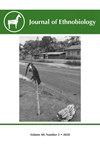无边界的文化基石物种:以格鲁吉亚-土耳其边境(小高加索西部)跨人类野生木本植物为例
IF 1.3
3区 社会学
Q1 ANTHROPOLOGY
引用次数: 3
摘要
摘要了解跨越文化和边界的植物意义是民族植物学的一个驱动目标。通常,实证研究旨在强调和解释跨越国家、地理和文化边界的社区之间植物知识和用途的差异。然而,这些研究低估了社区之间价值观和做法的共性。在这项对高加索格鲁吉亚和土耳其高地牧民社区的跨境研究中,我们提出并实施了一种综合文化重要性(CI)和已识别文化重要性(ICI)指数的方法。我们将这种方法称为“统一文化基石物种(UCKS)”方法。我们证明,这种方法能够独特地感知跨文化和跨国界的共享传统生态知识(TEK)和实践。我们的研究结果确定了三种主要的文化基石物种(CKS),它们跨越了小高加索西部的文化和政治边界。我们认为,这些发现有助于更全面地了解研究领域的民族植物学知识和实践。这反过来又可以通过强调共同传统和景观中的生物文化知识和价值的广度,加强研究区域内外的保护和恢复战略。通过这样做,我们展示了一种提高科学认识的方法,即文化和语言联系对特定地区环境福祉的重要性。本文章由计算机程序翻译,如有差异,请以英文原文为准。
Cultural Keystone Species without Boundaries: A Case Study on Wild Woody Plants of Transhumant People around the Georgia-Turkey Border (Western Lesser Caucasus)
Abstract. Understanding plant significance across cultures and borders is a driving goal in ethnobotany. Often, empirical studies aim to highlight and explain variation in plant knowledge and uses between communities across national, geographic, and cultural boundaries. However, such studies underinvestigate commonality of values and practices between communities. In this cross-border study of highland pastoral communities in both Caucasian Georgia and Turkey, we propose and implement an approach that synthesizes Cultural Importance (CI) and Identified Cultural Importance (ICI) indices. We label this method a “Unified Cultural Keystone Species (UCKS)” approach. We demonstrate that such an approach is uniquely capable of perceiving shared Traditional Ecological Knowledge (TEK) and practices across cultures and borders. Our results identify three primary Cultural Keystone Species (CKS) that cut across cultural and political boundaries in the Western Lesser Caucasus. We argue that these findings allow for a more comprehensive understanding of ethnobotanical knowledge and practices in the study area. This, in turn, can enhance conservation and restoration strategies in the study region and beyond by highlighting the breadth of biocultural knowledge and value held within shared traditions and landscapes. By so doing, we show a way to heighten scientific perceptions of the importance of cultural and linguistic connections to environmental well-being in specific places.
求助全文
通过发布文献求助,成功后即可免费获取论文全文。
去求助
来源期刊

Journal of Ethnobiology
Social Sciences-Anthropology
CiteScore
4.80
自引率
3.40%
发文量
21
审稿时长
>12 weeks
期刊介绍:
JoE’s readership is as wide and diverse as ethnobiology itself, with readers spanning from both the natural and social sciences. Not surprisingly, a glance at the papers published in the Journal reveals the depth and breadth of topics, extending from studies in archaeology and the origins of agriculture, to folk classification systems, to food composition, plants, birds, mammals, fungi and everything in between.
Research areas published in JoE include but are not limited to neo- and paleo-ethnobiology, zooarchaeology, ethnobotany, ethnozoology, ethnopharmacology, ethnoecology, linguistic ethnobiology, human paleoecology, and many other related fields of study within anthropology and biology, such as taxonomy, conservation biology, ethnography, political ecology, and cognitive and cultural anthropology.
JoE does not limit itself to a single perspective, approach or discipline, but seeks to represent the full spectrum and wide diversity of the field of ethnobiology, including cognitive, symbolic, linguistic, ecological, and economic aspects of human interactions with our living world. Articles that significantly advance ethnobiological theory and/or methodology are particularly welcome, as well as studies bridging across disciplines and knowledge systems. JoE does not publish uncontextualized data such as species lists; appropriate submissions must elaborate on the ethnobiological context of findings.
 求助内容:
求助内容: 应助结果提醒方式:
应助结果提醒方式:


